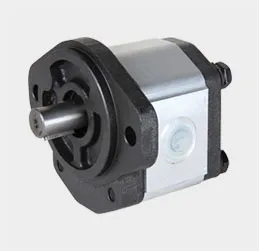Optimizing Machining Parameters for Enhanced Precision and Efficiency in Manufacturing Processes
Understanding Machining Parameters in Manufacturing
Machining involves removing material from a workpiece to achieve desired shapes, sizes, and finishes. The effectiveness of machining processes is influenced by several key parameters, which collectively determine the quality, efficiency, and cost-effectiveness of manufacturing operations. Understanding these machining parameters is crucial for optimizing production processes in industries such as aerospace, automotive, and general manufacturing.
One of the fundamental machining parameters is cutting speed. This refers to the speed at which the cutting tool engages with the workpiece material. It is usually measured in surface feet per minute (SFM) or meters per minute (MPM). The cutting speed affects the efficiency of chip removal and the tool's longevity. Each material has its specific optimal cutting speed range, which balances efficient machining with tool wear. Choosing the right cutting speed is essential to maximize production rates without sacrificing the performance of the cutting tool.
Another critical parameter is feed rate, which refers to the distance the tool advances during each revolution or cycle. The feed rate impacts the amount of material removed per minute and also affects surface finish. A higher feed rate can lead to increased productivity but may compromise the quality of the finished surface. Conversely, a lower feed rate can improve surface finish but may slow down the machining process. Therefore, selecting an appropriate feed rate is necessary to achieve a balance between efficiency and quality.
machining parameter

Depth of cut is another significant machining parameter. This refers to the thickness of the material layer being removed in a single pass of the cutting tool. An optimal depth of cut can enhance machining efficiency but can also increase the forces acting on the tool and the workpiece. If the depth of cut is too high, it may lead to tool failure or poor surface quality. Conversely, a shallow depth of cut might not effectively utilize the cutting tool's capabilities. Generally, manufacturers must consider both the tool specifications and the material characteristics when determining the optimal depth of cut.
Tool geometry is also an essential factor in the machining process. The shape and angles of the cutting tool influence how effectively it interacts with the workpiece material. Different applications may require specific tool designs to enhance cutting efficiency and control chip formation. Additionally, tool materials, coatings, and treatments can significantly affect performance in different machining environments. Understanding tool geometry and material properties enables manufacturers to select the most appropriate tools for their specific applications.
Coolant and lubrication are often overlooked but are vital to the success of machining operations. Cutting fluids help reduce friction between the cutting tool and the workpiece, dissipate heat generated during machining, and prevent tool wear. The choice of coolant can significantly affect surface finish and tool life. Therefore, selecting the right type and amount of coolant to use in conjunction with other machining parameters is essential to optimize performance and efficiency.
In conclusion, understanding machining parameters is fundamental for achieving optimal manufacturing outcomes. Parameters such as cutting speed, feed rate, depth of cut, tool geometry, and coolant application must be considered and balanced to enhance efficiency, improve surface finish, and extend tool life. By honing in on these parameters, manufacturers can streamline their processes, reduce costs, and maintain high-quality standards in their products. As technology advances, further research into these machining parameters will continue to play a crucial role in the evolution of manufacturing practices.
-
OEM Sand Cast Pump Valve Fittings - Baoding Hairun Machinery And Equipment Trading Co., Ltd.NewsJul.31,2025
-
OEM Sand Cast Pump Valve Fittings - Baoding Hairun | Precision Engineering, CustomizableNewsJul.30,2025
-
OEM Sand Cast Pump Valve Fittings - Baoding Hairun Machinery And Equipment Trading Co., Ltd.NewsJul.30,2025
-
OEM Sand Cast Pump Valve Fittings - Baoding Hairun Machinery And Equipment Trading Co., Ltd.NewsJul.30,2025
-
OEM Sand Cast Pump Valve Fittings - Baoding Hairun Machinery|Precision Engineering&Fluid ControlNewsJul.30,2025
-
OEM Sand Cast Pump Valve Fittings - Baoding Hairun Machinery And Equipment Trading Co., Ltd.NewsJul.30,2025















